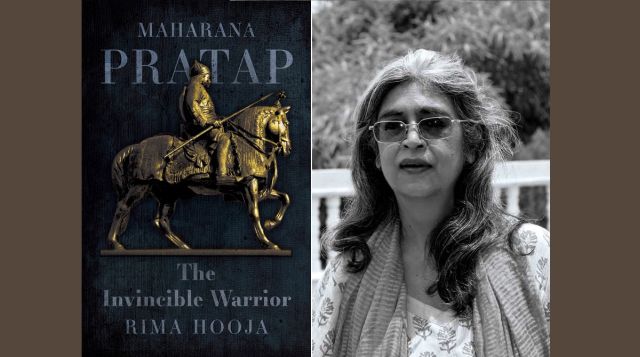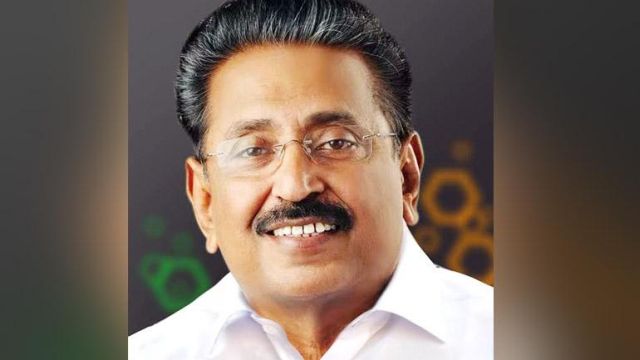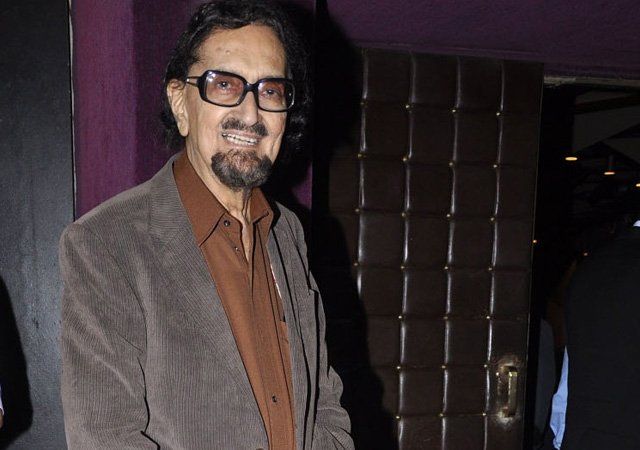
by admin | May 25, 2021 | Books
 By Mayabhushan Nagvenkar,
By Mayabhushan Nagvenkar,
Book: Maharana Pratap – The Invincible Warrior; Author: Rima Hooja; Publisher: Juggernaut Books; Pages: 204; Price: Rs. 499
Who really won the battle of Haldighati? Did Maharana Pratap’s army and his Bhil tribals outnumber Akbar’s Imperial army? Did the Rajput king flee from the battlefield on his loyal steed Chetak or was it a strategic getaway? All of this, and more, is captured in this recent offering.
To those familiar with the heroic lore of the Mewar warrior, historian Rima Hooja’s book helps put into context his achievement as the man who valiantly withstood the might of the Mughal empire at its peak, despite being in banishment for large periods of his reign. And to those unfamiliar with his exploits, it helps visualise the life and times of the warrior and the battles and valour which earned him his place in history.
In many ways, Maharana Pratap of Mewar and Chhatrapati Shivaji of the Maratha region were warrior brothers, bound together with the blood history.
While Shivaji won over the services of his mavlas — bandied together from disparate castes and religions — Pratap who preceded him in time, was sheltered by Bhil tribals who he eventually recruited in his fight against the Mughals, along with Afghan warriors.
“Maharana Pratap – The Invincible Warrior” gives us an insight into his line of ancestry and his ascent as the Rana of Mewar, amid a period of uncertainty and strife in the Rajput kingdom.
While the book’s draw is the detailed depiction of the epic battle of Haldighati. The valley named after its turmeric colours terrain, in a way was a cleavage between the two chauvinistic egos of Emperor Jaluddin Muhammad Akbar, whose elaborate campaigns as well as all-powerful reign brooked no stopping and Maharana Pratap, the pride of Rajput sunkings, who would never bend to the imperial will of the Mughal ruler, keen on further expanding his footprint south of Delhi.
Hooja evaluates the strength of both Pratap’s army and Akbar’s force, quoting multiple historical references of the period and after it, which often contradict one another leaving the reader to weigh the options presented.
While historian and Mughal era translator Abd al-Qadir Badayuni claims that the Mughal commander and Rajput king Man Singh led a cavalry of 5000, Nainsi’s Khyat, an account written by Munhot Nainsi, a Marwar minister claims that Man Singh led a force of 40,000 soldiers. Another work by Kaviraj Shyamaldas says that the Mughal army had as many as 80,000 soldiers.
Similar inconsistencies dog the count of Pratap’s force.
Hooja however lays to rest one persistent doubt, that the Maharana’s Mewar army was outnumbered by Akbar’s forces when they clashed at the battle of Haldighati, which took place in June 1576.
The book also narrates details about how the battle, one of the most popularly known conflicts, was not all about swagger and bravado, with both sides also resorting to trickery to boost the morale of their soldiers in a battle, where fortunes swing one way and then the other.
“In the heat of battle, when the Mewar forces seemed to be gaining the upper hand, the Mughal commander Mahtar Khan spread the rumour that Emperor Akbar himself was approaching, leading a large contingent of the imperial army. Akbar was not present at any stage of the battle of Haldighati, but at that moment the ploy worked and boosted the morale of the Mughal forces who, instilled with fresh courage, rallied anew.
The Maharana’s flight from battle against his wish, to “live to fight another day” as well as the account of his steed Chetak also finds reference in Hooja’s book, which formally establishes several aspects of the warrior’s life, already a part of North Indian legends.
(Mayabhushan Nagvenkar can be contacted at mayabhushan.n@Ians.in)
—IANS

by admin | May 25, 2021 | News, Politics
 Chennai/Thiruvananthapuram : Congress Working President in Kerala and Lok Sabha member from Wayanad, M.I. Shanavas passed away at a private hospital in Chennai on Wednesday, a party leader said. He was 67.
Chennai/Thiruvananthapuram : Congress Working President in Kerala and Lok Sabha member from Wayanad, M.I. Shanavas passed away at a private hospital in Chennai on Wednesday, a party leader said. He was 67.
“The party has lost a stalwart. I have lost a dear brother,” Leader of Opposition in Kerala Assembly Ramesh Chennithala said.
Shanavas, a two time parliament member was ailing for sometime and was admitted at a hospital in the Tamil Nadu capital. He is survived by his wife and two daughters.
“His body will be brought to Kochi today. It will lay in state for the public to pay their last respects and the final rites will take place tomorrow,” said Chennithala.
A long time close aide of former Kerala Chief Minister K. Karunakaran, Shanavas along with Chennithala and former Kerala Speaker late G. Karthikeyan in the 1980s parted ways with Karunakaran and formed their own faction, ‘the reformist’.
Shanavas won the 2009 Lok Sabha polls from Wayanad, which he retained in 2014.
Chief Minister Pinarayi Vijayan and his cabinet colleagues condoled the passing away of Shanavas.
—IANS

by admin | May 25, 2021 | Opinions

Representational Image
By Amulya Ganguli,
Uttar Pradesh Chief Minister Yogi Adityanath has lived up to his reputation as a Hindutva hawk. There has been no mellowing of his attitude as is common in the cases of other hardliners ascending to the seat of power. Instead, he has taken the opportunity of the authority provided by political power to tell the province and the country that Hindu symbols and signs are of overriding importance.
Hence, the concept of a huge statue of Lord Ram on the banks of the Saryu, whole-hearted support to the Ram temple movement and the erasure of Muslim names of towns.
Starting with the renaming the Mughal Sarai railway junction, familiar to countless travellers, after a person who is little known outside the Hindutva camp — Deen Dayal Upadhyay — the Adityanath government has been energetically engaged in changing the names of other places as well.
These include Allahabad, which has become Prayagraj, Faizabad, now Ayodhya, and Muzaffarnagar, which may soon be called Laxmi Nagar if the government accepts the suggestion to this effect by Bharatiya Janata Party (BJP) MLA Sangeet Som, who had called the Taj Mahal a “blot” on Indian culture.
Encouraged by Adityanath, Gujarat Chief Minister Vijay Rupani has suggested the name of Karnavati for Ahmedabad. Not to be left behind, the BJP’s ally, the Shiv Sena, has sought a time-frame for renaming Aurangabad and Osmanabad.
Hyderabad, too, is under the Hindutva scanner, for the BJP has said that if it won the assembly elections in Telangana, it will name the city as Bhagyanagar.
Although cities have been renamed in the past — Chennai for Madras, Mumbai for Bombay, Kolkata for Calcutta — the idea was generally to revive an old name such as the association of Madras/Chennai with a 16th century ruler, Chennappa Naicker.
Or to pay homage to a local deity, Mumbadevi, as in the case of Bombay. Or to bring a name phonetically close to the way it is locally pronounced like Kolkata.
But rarely has been a city renamed with the sole purpose of highlighting a Hindu name and snubbing Muslims.
True, the names of roads and localities (such as Clive Street or Connaught Place) associated with the British rulers were changed. But these steps were taken to do away with a colonial connection although the names of “friendly” foreigners were retained, as in the case of the Corbett National Park.
But the saffron brotherhood’s present drive is motivated solely by a desire to erase all signs of Muslim heritage, presumably because of the belief that the community does not — or at least should not — have any place in the country.
Hence, BJP MP Vinay Katiyar’s advice to Muslims living in India to go to Pakistan or Bangladesh.
The Rashtriya Swayamsevak Sangh (RSS) and the BJP apparently hold the view that the Mughals and the Muslim rulers before them as well as their co-religionists today are basically aliens although the Mughals and the others made India their home unlike the British.
Although the RSS chief, Mohan Bhagwat, argued at a three-day conclave in Delhi that Hindutva is incomplete without Muslims — thereby acknowledging the country’s multi-religious identity, which is the secular camp’s view — Adityanath’s acts show that the case for accommodation is not accepted by the Hindutva hawks.
To them, the replacement of the signs of Muslim presence in the country is an expression of Hindu pride just as the demolition of the Babri masjid in 1992 and the Gujarat riots of 2002 were cited as instances of Hindu “awakening”.
Obviously, multicultural tenets are anathema to the Hindutva brigade as they militate against the “one nation, one people, one culture” ideals of a Hindu rashtra, where the minorities will be second class citizens.
The Hindus-only tunnel-vision of the hardliners ignores the fact that India is the birthplace of four religions — Hinduism, Buddhism, Sikhism and Jainism — and the home of the followers of three other faiths — Islam, Christianity and Zoroastrianism, not to mention the animism of the tribals.
Even if the urgency of the present erasing of Muslim signs in the twilight years of Narendra Modi’s government is due to the apprehension in ruling circles that the inadequacies of the government have left it with no option but to play the Hindu card with greater fervour, it is clear that the tactic has only brought to the fore the long-standing anti-minority outlook of the Sangh Parivar.
It is also self-evident that the occasional homilies of the RSS bigwigs in favour of accommodating Muslims and the lectures favouring pluralism given by prominent guest speakers before RSS cadres have little practical effect.
In contrast, the humiliating wiping out of little bits of India’s past with their Muslim associations can only widen the gulf between the Hindus and the country’s largest minority community even if the latter understands the crass political intent of the provocative acts, which have the support of only the BJP and other saffron outfits, and not of the Hindus in general.
As for the political saffronites, it has been a step by step process from the rewriting of history when Murli Manohar Joshi was the human resource development minister in order to present the Middle Ages as a time of constant conflict between Hindus and the “invaders”, to the latest attempt to obliterate the concept of a composite culture or the Ganga-Jamuni tehzeeb (culture), as it is known in Uttar Pradesh.
(Amulya Ganguli is a political analyst. The views expressed are personal. He can be reached at amulyaganguli@gmail.com)
—IANS

by admin | May 25, 2021 | Entrepreneurship, News, Success Stories

Alyque Padamsee
By Quaid Najmi,
Mumbai : Alyque J. Padamsee, lent glamour to common products and brought luxury products within the reach of the common masses with his catchy and memorable advertising campaigns.
Considered the Father of Indian Advertising, Padamsee also excelled as a theatre personality and as an actor. He was deeply involved in numerous nationalist and public causes dear to his heart, besides being “a generous but silent philanthropist”.
Padamsee had been ailing for some time and breathed his last at around 5.30 a.m. on Saturday (November 17) at a private hospital. He was 90. His last rites will be performed at the Worli Crematorium on Sunday morning, a close family friend said.
He is survived by two former wives, his third wife having died. and four children, besides other relatives, several of them prominent names in the media, glamour and entertainment industry.
“Saddened by the demise of Alyque Padamsee. A wonderful communicator, his extensive work in the world of advertising will always be remembered. His contribution to theatre was also noteworthy,” Prime Minister Narendra Modi said in a tribute.
Alyque was one among eight children of an aristocratic but highly conservative Khoja Muslim family of Jafferbhai and Kulsumbai Padamsee of Gujarat. One of his brothers is the famous modern Indian art painter Akbar Padamsee.
However, though reared in a traditional Muslim environment, when he turned an adult, he renounced his religion and described himself an ‘agnostic’ or non-believer in the existence of God.
Educated at Mumbai’s renowned St. Xaviers College, where he was introduced to a restless crowd of fashionable youngsters, Padamsee developed a highly cosmopolitan outlook and was raring to step out into the world and make his mark.
And what better than the world of entertainment and media to create a quick and lasting impression? He plunged into acting and communicating, soaring to unscaled heights over the years.
During his career in advertising, most notably as the Chief Executive of one of India’s biggest advertising agencies, Lintas India from 1980-1994, Padamsee was involved in nurturing and building over a 100 major products/brands through lasting and memorable campaigns.
Later he became the Regional Coordinator for Lintas South Asia and became the only Indian to be inducted into the International Clio Hall of Fame, regarded as the Oscars of world advertising.
Padamsee attained global fame in brand promotions with memorable and highly successful advertising campaigns – the vivacious Liril girl in a green bikini in a waterfall, the homely Lalitaji in Surf, family oriented Hamara Bajaj, MRF Muscle Man, the Charlie Chaplin-inspired Cherry Blossom, the original Fair & Handsome and the bold Kamasutra Couple among others, which have a recall value even today.
“He had the knack of infusing glamour into ordinary products and simultaneously created a desire for deluxe products among the common masses, creating both superbrands and superconsumers. That was the secret of his success in the complex field of advertising,” said veteran marketing consultant Pradeep Menon.
This, Menon said, suited both – the manufacturers and consumers – with advertising performing the perfect role of the medium at a time when advertising was still limited to dark cinema halls and black-and-white pages of newspapers or magazines, unlike the post-1990s.
A renowned personality in the English theatre scene, Padamsee produced around 70 plays, including notable ones like “Evita”, “Tughlaq”, “Jesus Christ Superstar”, “Death of a Salesman”, “A Streetcar Named Desire” and “Broken Images”.
Among his various professional achievements, Padamsee is best remembered for his role as a stern and stubborn Mohammed Ali Jinnah in Richard Attenborough’s multi-Oscar award winner classic, “Gandhi” (1982).
“That was a challenging assignment, enacting a tough character largely reviled in India. He was cast opposite globally-renowned stalwarts like Ben Kingsley who portrayed Gandhiji, Roshan Seth as Pandit Jawaharlal Nehru and Saeed Jaffrey as Sardar Vallabhbhai Patel. But Padamsee carried off the difficult role with aplomb and is fondly remembered more than 35 years after the film created history,” said veteran film journalist Jivraj Burman.
Padamsee had penned his autobiography, “A Double Life”, which provided some insights into his eventful life in which he played multiple roles.
After a 14-year stint with Lintas India, in 1994, he founded and was the CEO of AP Advertising Pvt. Ltd., specialising in image and communication consultancies for celebrities and brands, both domestic and international.
A close associate and activist, Teesta Setalvad, recalls how she was summoned by him for her story on the Rajasthan drought in 1987.
“Since then, he was there with us all the way. Citizens for Justice and Peace (formed in the wake of the 2002 Gujarat riots), of which he was the trustee, will always cherish his unwavering support through some of our darkest days. His commitment to secularism and social justice will continue to guide our work,” said Setalvad.
Contrary to his flamboyant image, Padamsee was a Good Samaritan who went out of his way to help the suffering masses – whether during the Latur and Gujarat earthquakes, Odisha floods, Uttarakhand disaster, the Gujarat communal carnage and many other public cause, but taking care not to “advertise” his heart of gold, Setalvad revealed.
Padamsee was conferred several honours during his lifetime including the Padma Shri, Advertising Man of The Century and the Sangeet Natak Akademi Tagore Ratna.
Padamsee was married, at various times, to actress and stage personality Pearl Padamsee, renowned media icon Dolly Thakore and pop singer Sharon Prabhakar.
He leaves behind daughers Raell and Shazahn and sons Rahul and Quasar.
(Quaid Najmi can be contacted at quaid.n@ians.in)
—IANS

by admin | May 25, 2021 | News, Politics
 Ernakulam (Kerala) : The National Investigation Agency (NIA) has launched an investigating to find cross-border links in the smuggling of fake currency notes, the central agency said while filing a chargesheet in a counterfeit currency case here on Saturday.
Ernakulam (Kerala) : The National Investigation Agency (NIA) has launched an investigating to find cross-border links in the smuggling of fake currency notes, the central agency said while filing a chargesheet in a counterfeit currency case here on Saturday.
The NIA filed the charge-sheet in a Special Court in Ernakulam against Ali Hossain, 29, a resident of Murshidabad district in West Bengal.
It charged that Hossain, along with his associates — all Bangladeshi nationals, hatched a criminal conspiracy to circulate fake notes as genuine. Hossain had procured fake Indian currency notes through his associates from the neighbouring country.
“Further investigation to unearth cross-border links of accused in this case continues,” the NIA said.
The agency has chargesheeted him under sections 120B (criminal conspiracy) and some other sections of the Indian Penal Code.
The NIA lodged a case on August 19 against Hossain, who was arrested by the Kerala Police, when he attempted to use counterfeit currency notes of Rs 2,000 denomination as genuine currency at a shop in Thrissur.
Two fake currency were recovered from his possession, while 101 more counterfeit currency notes of Rs 2,000 denomination, were recovered at the instance of the accused from his rented accommodation at Mudapallur in Palakkad district.
—IANS





